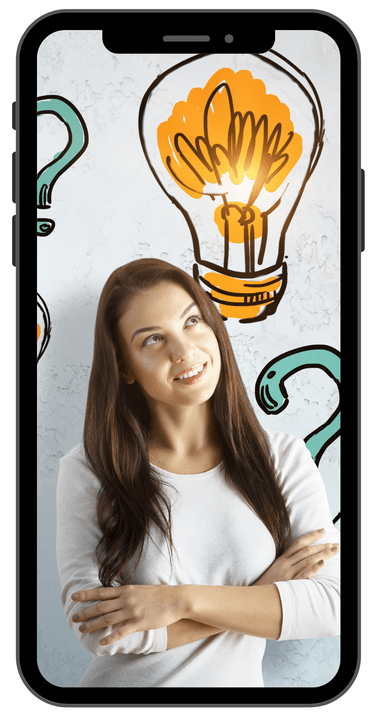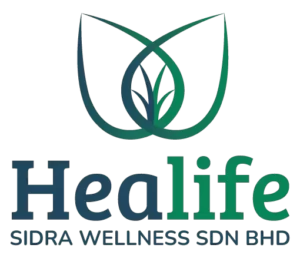Claim Your Free Consultation Now!
- Home
- Hijama (Wet Cupping)
Hijama (Wet Cupping)
What is Hijama (Wet Cupping) ?
Wet cupping therapy or Hijama is a complementary medicine technique that has improved the lives of humans for thousands of years. Almost every civilization, from the east to the west, has utilized this great therapy to enhance their health in one way or another. Scroll down to understand the scientific & medical basis of Hijama.
We at Healife, provide safe and hygienic hijama treatment with our experienced practitioners. Our head specialists are UK-certified with more than 23 years of experience.
Why Should You Do It At Healife?
At Healife, we practice complementary medicine at the highest standards:
- Our practitioners are from a medical background: we are well trained in both modern medicine and complementary medicine.
- We perform each treatment to the WHO-standard standards of hygiene and safety. All materials are 100% disposable & treatment room is constantly sterilized.
- You will first be screened with a thorough consultation & health-check to ensure Hijama is safe for you. We do this to avoid any risks or side effects and to ensure you are always safe with Healife.
- Each treatment plan is carefully designed and every single position of every single cup is studied well – we are specialists that do not place cups randomly.
- We personalize the treatment duration, number of cups, type of incision & more to match your body’s needs.
- Additionally, we offer packages for Wet cupping, therapeutic cupping, cosmetic cupping and preventative cupping.
Safe:
Our trained practitioners safely applies the cups to all our clients. We are highly trained in both our medical and alternative fields. Healife practices alternative medicine at the highest of standards, where it should belong. Patients will first be screened to ensure all contraindications are followed to avoid any risks/ side effects.
Hygienic
Although this is an invasive procedure, high levels of health and hygiene is practiced. All treatment materials are sterile and new before use for each and every single session. All materials such as cups, blades, are disposed after each and every single session.
Not painful :
Our highly trained consultants follows WHO standards. You may feel a tolerable ticklish, light scratching or mild soreness after the superficial incisions are made or cups have been placed. However, you will not feel any sudden, sharp or extreme pain. After the treatment, you might expect to have marks on the treated areas that lasts for a maximum of 7 days.
Is Hijama right for You?
Take this 1-minute quiz to find out:
Testimonials
What Our Customers Love About us


Schedule Your FREE Consultation
How Does It Work?
Step 1:
Before you come to Healife
- Cupping is best done on an empty stomach. It is recommended to not eat before your appointment from 3-5 hours. Water is allowed but sugary drinks & coffee or not.
Step 2:
Assessment & Treatment Plan
- After we welcome you at Healife, you will do a quick vital signs check
- Next, during the specialist consultation our therapists will better understand your case and medical history.
- The consultation also aims to ensure that there are no contraindications.
Step 3:
Performing The Procedure
Phase 1 – Primary Suction
Phase 2 – Incisions Made
- Very superficial incisions are made with a sterilized blade, only 1 mm to reach the dermis layer of the skin. Based on WHO capillary sampling standards, <3mm incisions are made on the skin using a sterilized blade.
Phase 3 – Secondary Suction
- After the incisions are made, a cup is immediately placed on the same area. Slowly, your body will start to expel any causative pathological substances (CPS) including dead or withered red blood cells (RBC) Note that, upon microscopic inspection, no healthy RBC leave your body due to a mechanism known as capillary filtration. This step lasts about 3-5mins. We may have to remove the cup a couple of times during the treatment to avoid blisters forming.
Phase 4 – Disinefction
- The cup is removed and all the equipment used will be immediately disposed. After cleansing and disinfecting the area, we will place adhesive strips on the area as needed for the next 48 hours whilst your body heals.
- The specific points that have been predetermined by the specialist will firstly be disinfected. A cup is placed on the specific points, where a vacuum will be created by suction. The cup will be left on for 1-2 mins.
Phase 3: After Care
- After your session, you should feel very light and relieved. Your therapist will advise you on the next steps for your treatment.
- Do’s: Rest, drink plenty of water & try to get 9+ hours of sleep to allow your body to focus on healing.
- Don’ts: Avoid Dairy, Spicy foods, Alcohol, Sexual Activity, Strenuous Exercise.
- To Note: The cupped area might feel a little burning sensation and that is perfectly normal. Try to avoid sweating as much as possible
- You will be able to take shower after 2 hours or until the cuts are healed.
Scientific Basis of Hijama(Wet cupping)
- Although the results of Hijama or Wet cupping therapy have been shown time and time again, the exact mechanism of action is still under scientific research. In complementary medicine, research usually takes place the other way around- first we see results then we look for mechanisms and reasons. For each of the four main effects of wet cupping therapy (WCT) , there exists a couple of theories, according to Al-Bedah et al., 2019 & StatPearls 2023.
- PAIN REDUCTION EFFECTS
- Pain reduction effects and changes in biomechanical properties of the skin could be explained by Pain-Gate Theory. There is some evidence (Kim et al., 2011) relating to wet cupping as a treatment for pain.
- Diffuse Noxious Inhibitory Controls (DNICs):
- Most of the work concerning this theory was done on the idiopathic pain syndromes such as irritable bowel syndrome, and tension type headache, which have shown excellent response to cupping therapy. Local affects of the skin and capillary vessels induced by wet cupping may cause a nociceptive stimulus that activates DNICs. This mechanism requires a strong conditioning stimulus for pain attenuation, which may be dependent on a distraction effect, and may act by triggering a DNIC or by removing oxidants and decreasing oxidative stress. Wet cupping therapy may produce pain releive via nerves that are sensitive to mechanical stimulation.
- Reflex zone theory
- In Wet cupping therapy, when the diseased organ sends a signal to the skin through the autonomic nerves, the skin responds by becoming tender and painful with swelling. Skin receptors are activated when cups are applied to the skin. The entire process will result in the increment of the blood circulation and blood supply to the skin and the internal organs through the neural connections.
Scientific Basis Of Hijama
Immunological effects and hormonal adjustments
They can be explained by the activation of the immune system theory, through the regulation of Antibodies and haemoglobin. Wet cupping irritates the immune system by creating an artificial local inflammation, which activates the complement system and increases the level of immune products such as interferon. Cupping effect on the thymus increases the flow of lymph in the lymphatic system. Overall, activation of the immune system via Wet cupping can explain its various effects including therapeutic outcomes in patients with autoimmune diseases.
Releasing of toxins and removal of wastes and heavy metals
The Blood Detoxification Theory can explain the aforementioned effects. It addresses the removal of toxic substances from the affected area where the cups are applied. According to the theory, cupping therapy:
- Decreases levels of uric acid, HDL, LDL
- Adjust the molecular structure of haemoglobin
- Excretion of old red blood cells
- Removes heavy metals such as aluminium, mercury, silver and lead
- Promotes the release of toxins and wastes, improves the local nutrition state, boost metabolism, and eliminate pathogenic factors.
For more information you may visit https://www.sciencedirect.com/science/article/pii/S2225411018300191 for an in-depth understanding of the scientific basis of hijama or wet cupping.
Wet Cupping therapy has reported benefits in the treatment of:
- Neck, shoulder, back, knee pain
- Rheumatic disease such as arthritis and fibromyalgia
- Skin problems such as eczema and acne
- Systemic disease such as diabetes or hypertension
- Reduce the risk of cardiovascular disease
- Strokes and facial paralysis or bell palsy
- Blood disorders such as anaemia and haemophilia
- Fertility and gynaecological disorders
- Migraine, anxiety and depression
- Bronchial congestion caused by asthma and allergies
- Autism and ADHD
Frequently Asked Questions

Wet cupping includes removal of blood from the body whilst dry cupping doesn’t involve any blood and is entirely non-invasive. Therefore the physiological mechanisms of action is different and they each have different applications.
Most people will do a combination of both dry & wet cupping in one go for an ultimate combo session. Your therapist will advise you on which to choose according to your specific body needs & health goals.
Hijama boost your body’s defense system to heal through blood, lymh and nerve activation. Hijama also is excellent at removing toxins & poor blood cells from the body. The result is that Hijama relieves pain, treats medical conditions and
Removal of Toxins from Blood,Relieves Chronic Fatique Syndrome, Promotes Healthy Skin
promotes
Very Safe to do hijama, but needs an expert practitioner to actually see results ◦
- Anemia
- Diabetes
- Low Blood Pressure
Only safe to do hijama if special precautions are taken
- Have an open wound
- Recently broke a bone
- Pregnancy 1st Trimester
- Any Stage Cancer
- Has a Pacemaker
- Seizures
- Taking blood thinners
- Not Safe to do hijama
- Stroke
- High fever / flu
Fast 3 hours before your hijama treatment
For most people it is recommended to do Hijama every month or every 3 months. For others, it can be done weekly or only twice a year.
Sometimes, dark spots might mean there is existing inflammation or excess toxins in a particular area. Other times, a dark mark may only be a result of your skin color. You may ask the specialist to explain in the session! The marks last anywhere from a few hours to several days.
Between a few hours to 7 days before gradually fading away entirely.



